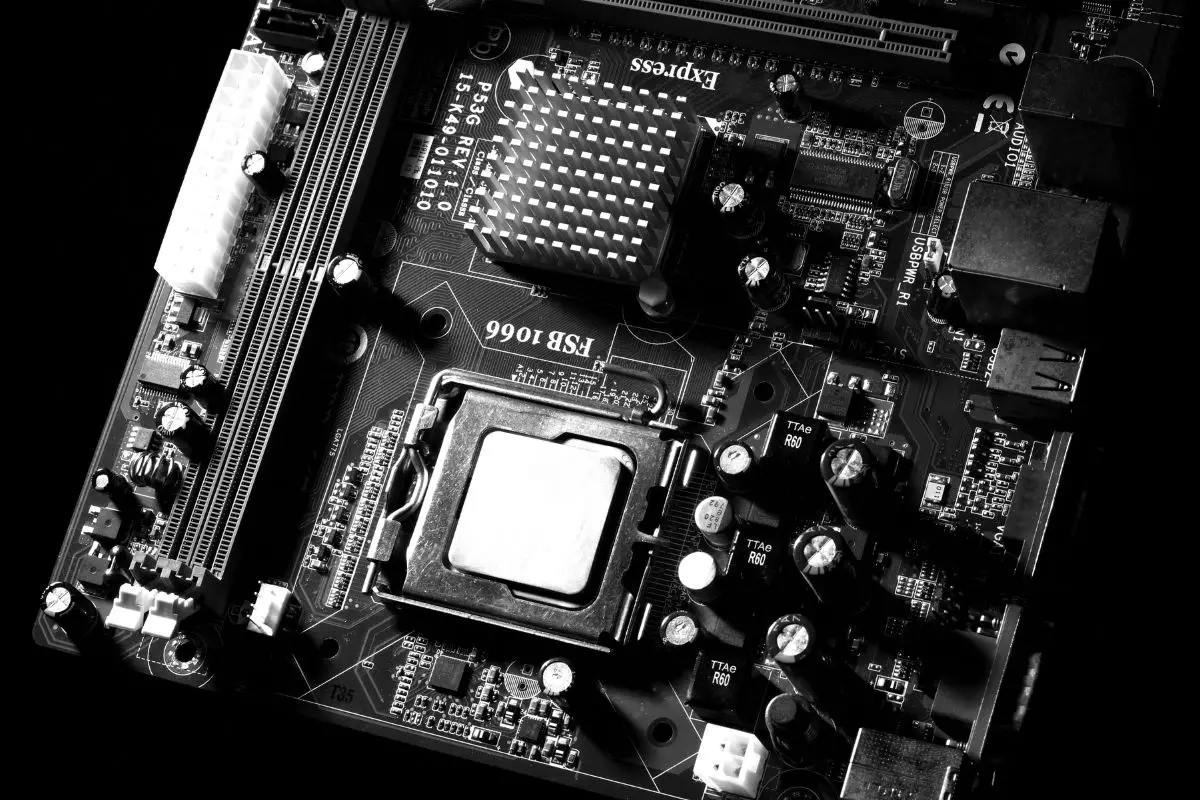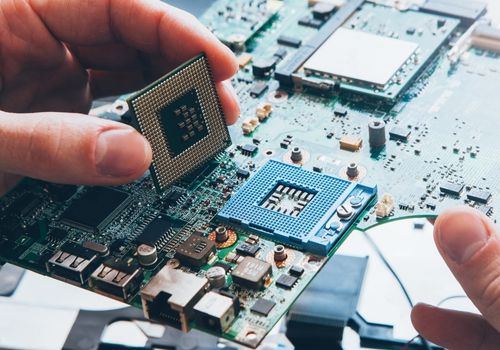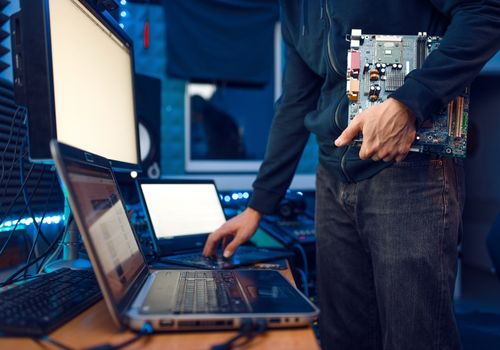
Not all motherboards have Bluetooth connectivity out of the box. Most desktop motherboards don't have built-in Bluetooth. However, there is a healthy selection that does. Almost every laptop motherboard has Bluetooth though. Some ways to tell are that motherboards that support Bluetooth usually have WiFi functionality or come in the Mini-ITX form factor.
I use Bluetooth peripherals like headphones and wireless game controllers a lot, so every time I put a computer together, I make sure that the motherboard has integrated Bluetooth connectivity. I've learned the best ways to figure out whether a mobo is likely to have Bluetooth built-in, and for the most part, they haven't failed me.
In this guide, I'll show you how to check whether a motherboard has built-in Bluetooth or not. Let's get right into what you need to know.
Contents
To answer this question right away, some desktop mobos have Bluetooth built-in while others don't. However, you're more likely to find a motherboard without Bluetooth than one with it.
When it comes to laptop motherboards, essentially every single one has Bluetooth integrated into it.
Why don't manufacturers make Bluetooth connectivity a standard feature on desktop motherboards? Well, it's hard to say but I think it's likely because there are superior wired and wireless connections available if you're not focusing on portability.

Most wireless computer accessories like keyboards and mice use RF adapters for less latency, and for audio, a wired connection is always a better option.
Considering how a desktop motherboard without Bluetooth usually doesn't have WiFi either, it makes sense since a desktop benefits more from being plugged into the internet with an Ethernet cable instead of over a Wi-Fi network.
Of course, in some cases, using a Bluetooth device is simply more convenient. This is why it's great that there are motherboard options that have a Bluetooth feature.
If you want to know whether your motherboard has Bluetooth, there are some things you can look out for. This will give you a pretty good idea of whether a specific motherboard has Bluetooth built-in.
Bluetooth and WiFi go hand-in-hand when it comes to desktop motherboards since they tend to be on the same card or chip. If your motherboard supports WiFi, you likely have Bluetooth connectivity too.
The form factor of the motherboard plays a big part too. Laptop motherboards are made to be portable and don't have the option of adding internal expansion cards for WiFi or Bluetooth. They also have a limited number of ports, and many are dropping the Ethernet socket to promote slimmer profiles.
You'll find that essentially every single modern laptop has WiFi and Bluetooth connectivity. This frees you from taking up a USB port with a Bluetooth dongle, and you can use WiFi for your internet needs.
This also applies to the Mini-ITX boards, which are the smallest form factor of desktop motherboards. Since they are made to be as small as possible, they have limited USB ports and only one PCIe slot. For this reason, they typically have built-in Bluetooth and WiFi.
If you notice that your motherboard has antenna ports behind it, it's another good sign that it has the capability for both WiFi and Bluetooth.
However, if you want to be absolutely certain that your new motherboard has Bluetooth connectivity, there are two methods I recommend for this.
Device Manager is a great way to check whether you have built-in Bluetooth on your computer since you can do it without opening your PC.
To use Device Manager to check for Bluetooth functionality, follow the steps below:
Keep in mind that seeing Bluetooth as an option in Device Manager doesn't necessarily indicate that your motherboard has built-in Bluetooth. It will also show up if you have a Bluetooth adapter or PCIe card plugged in.
If you don't see any Bluetooth option, you either don't have built-in Bluetooth or your computer doesn't have the appropriate drivers installed for it.

The other way to check whether motherboards have Bluetooth is to take a look at the specifications for that motherboard model.
All major motherboard manufacturers have spec sheets on their websites. So, all you need to do is search for the model name online and look through the specs. There will usually be a WiFi and Bluetooth section.
One advantage of checking the specs is that it will let you know what version of Bluetooth your motherboard has. The newer the Bluetooth standard, the better wireless performance you'll get from your Bluetooth connectivity. Bluetooth 5.2 is a fantastic option, for instance.
If you don't know the model number for your motherboard, you'll either need to open the computer and look for it, or use the System Information utility on your Windows PC.
To do the latter, follow these steps:
Since most desktop motherboards don't have Bluetooth, you might find out that you're out of luck in that regard.
The good thing is that you can still give your computer Bluetooth functionality. While you can't install Bluetooth as you might do with software, you can use a Bluetooth adapter or PCIe card to give your PC this kind of functionality.
Bluetooth adapters that plug into a USB port are the simplest way to add Bluetooth connectivity to a computer.
These are inexpensive and most of them are plug-and-play. This means that inserting a Bluetooth dongle into a USB port will instantly install the necessary drivers to your operating system and you'll be able to use it right away.
This product from TP-Linkis a good choice. It has a very low profile, supports Bluetooth 5.0, and won't cost you much at all.
If you'd rather save yourself a USB port, you can get a PCIe WiFi card to install inside your computer.
With these kinds of cards, you always get both WiFi and Bluetooth in the same package. This is a good choice since most motherboards without Bluetooth tend not to have built-in WiFi either.
This option is best for people who have more expertise with computers since you're going to have to open the case to install the WiFi and Bluetooth card into a free PCIe slot. Here's a helpful video showing you how.
One of these cards is also more expensive than a dongle by quite a margin. This isn't really a surprise considering the card comes with WiFi too.
You can get a PCIe card from TP-Link that has WiFi 6 and also comes with Bluetooth 5.2, so you're guaranteed solid wireless performance.
If you've finally been able to get a motherboard that has Bluetooth built-in or you've installed an adapter or card, you might not be sure how to add Bluetooth peripherals.
Don't worry, I'll run you through how to do this on your PC in a few steps:
Now you know whether motherboards have Bluetooth or not simply depends on the exact motherboard you have. Laptop motherboards, Mini-ITX boards, and any motherboard that has built-in WiFi will typically have Bluetooth built in.
To check if your motherboards have Bluetooth, you can use Device Manager or check the specifications on the manufacturer's website. If your motherboard does not come with Bluetooth, you can add Bluetooth functionality using a USB adapter or a WiFi and Bluetooth PCIe card.
